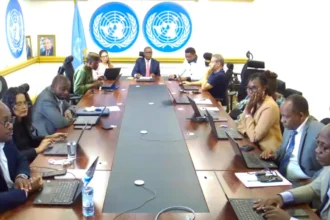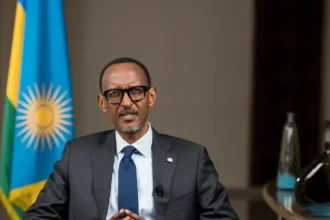Zimbabwe has firmly established itself as one of Africa’s mining heavyweights. The country holds the continent’s largest known lithium reserves and ranks among the top five globally for the mineral, which is vital to electric vehicle (EV) batteries. The Bikita mine alone contains an estimated 10.8 million tonnes of lithium ore grading 1.4%. In 2024, Zimbabwe’s lithium output surged to 122,000 tonnes, nearly double the previous year’s production a performance that cements its role as a key player in the global EV and renewable energy supply chains. Lithium is only one facet of Zimbabwe’s vast mineral wealth. The country is also a major producer of platinum, gold, and chrome. Its flagship mines Zimplats and Mimosa account for a significant share of national output. In 2025, platinum production is expected to reach around 17,540 kg, down due to declining global prices.
Gold remains the backbone of Zimbabwe’s mining industry, with exports worth US$2.5 billion in 2024, up 9% from the previous year. Production is forecast to rise from 38,454 kg in 2024 to 43,390 kg in 2025. Meanwhile, chrome, mined along the Great Dyke, keeps Zimbabwe among the top global producers of ferrochrome, a key component of stainless steel.
The mining sector: backbone of the national economy
Mining is the mainstay of Zimbabwe’s economy, accounting for over 60% of total export revenues. In 2024, gold brought in around US$2.5 billion, platinum US$1.8 billion, and lithium US$210 million, reflecting booming global demand for battery minerals. Coal production, though largely domestically consumed, also contributes to energy security and generated roughly US$150 million in revenues.
Overall, Zimbabwe’s total mining receipts are projected to hit US$6.2 billion in 2025, up from US$5.9 billion in 2024 driven by a rebound in gold output and strong lithium demand despite headwinds in other segments.
A strategic shift : lithium concentrate exports to be banned in 2027
On June 10, 2025, Mines Minister Winston Chitando confirmed that Zimbabwe will ban the export of lithium concentrates starting January 2027. This milestone decision marks a new phase in the government’s local beneficiation strategy, first introduced in 2022 when exports of unprocessed ores were prohibited. The move pursues two clear goals: Encourage mining firms to invest in local refining and processing; increase state revenues by exporting higher-value products. With 122,000 tonnes of concentrate produced in 2024, Zimbabwe now has the production scale needed to develop a domestic lithium refining industry.
Investor interest remains high, particularly from Asia. Since 2021, Chinese mining giants Sinomine, Huayou Cobalt, Chengxin, Yahua, and Canmax have collectively invested over US$1 billion in Zimbabwe’s lithium sector. The country’s substantial reserves and relatively stable mining policies make it an attractive destination for global capital. However, the sharp fall in global lithium prices in 2023 forced authorities to temporarily relax some local processing requirements. In 2024, Harare eased regulations to sustain production, but the strategic direction remains unchanged: build a national battery-grade lithium industry rather than merely exporting raw materials.
A massive value gap
The economic logic behind the ban is compelling. On the Shanghai market, one tonne of refined lithium carbonate can sell for up to US$8,489, compared to just US$570 for a tonne of concentrate. This massive value gap underscores why Zimbabwe aims to capture more of the lithium value chain by processing the mineral locally. The policy could yield billions in additional revenues, create skilled jobs, and enhance the country’s industrial sovereignty.
Despite strong prospects, several structural challenges could slow progress. Zimbabwe faces chronic power shortages, with daily needs estimated at 800 megawatts. Average production costs are projected to rise by 8% in 2025, squeezing profit margins for mining companies. Industry players also criticize the complex fiscal framework, particularly a new 5% export tax included in the mining reform. Many are calling for a delay in its implementation until the first processing plants become fully operational. In addition, infrastructure gaps from roads and railways to logistics hubs remain a key barrier to scaling up local beneficiation.
A model for the african continent
Zimbabwe’s approach is gaining attention across Africa. By moving away from the traditional extract-and-export model, the country is sending a powerful message : owning raw materials is not enough value must be added at home. If Harare succeeds in implementing its 2027 plan, Zimbabwe could not only boost its mining revenues but also set a precedent for African resource-rich nations seeking to industrialize through local processing. The broader vision is clear: transform Africa from a continent of extraction into a continent of transformation building industries, skills, and sovereignty through smart mineral policies.















